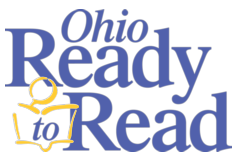Key Topics in Ohio Education
What are Ohio's Learning Standards?
Learning Standards define what students should know and be able to do at each grade. Ohio's Learning Standards are intended to guide teaching so that students develop critical thinking and problem solving skills, study the most important and useful concepts within each subject, and learn to apply knowledge and skills in each subject. Learn more about Ohio's Learning Standards.
What are Ohio's Early Learning and Development Standards?
Ohio's Early Learning and Development Standards (ELDS) describe key concepts and skills that young children develop during the birth-to-five-year period. Their purpose is to support the development and well-being of young children and to foster their learning by providing a clear, comprehensive set of expectations for content to guide early childhood programs and educators. Learn more about Ohio ELDS.
What is Ohio’s Kindergarten Readiness Assessment (KRA)?
The KRA is a tool used by teachers to measure the school readiness of children at kindergarten entry. It is intended to show how well-prepared children are for kindergarten. The KRA assesses four areas of early learning:
- Social Foundations, including social and emotional development and approaches toward learning
- Mathematics
- Language and Literacy
- Physical Well-being and Motor Development
The KRA involves observation by the teacher, simple questions and answers between teacher and student, and specific tasks performed by the student (such as producing a rhyming word). Learn more about the KRA.
What is Ohio's Third Grade Reading Guarantee?
Ohio's Third Grade Reading Guarantee (TGRG) is a statewide program to identify students from kindergarten through third grade who are behind in reading. The TGRG requires that school districts and community schools use diagnostic assessments adopted by the State Board of Education to assess each student's reading skills at the beginning of kindergarten, first, second, and third grade, to identify students who are not on-track (i.e. reading below grade level). Upon identification of a student as not on-track, the district or school must notify the student's parents and provide the student with intervention services, including a reading improvement and monitoring plan. Learn more about the TGRG.
What is the science of reading?
The term "science of reading" refers to an interdisciplinary body of scientific evidence that informs how students learn to read and write proficiently. It indicates that all students benefit from explicit and systematic instruction in phonemic awareness, phonics, vocabulary, fluency, comprehension, and writing to become effective readers. In Ohio, House Bill (HB) 33 of the 135th General Assembly mandates the implementation of curriculum aligned with the science of reading in K-12 schools. Learn more about science of reading.
What are Ohio's State Tests?
Ohio students are tested in English Language Arts, Mathematics, Science and Social Studies. Ohio's State Tests Portal offers practice tests and information for students and families, as well as information and technical assistance for educators. Learn more about Ohio's State Tests.
What are Ohio's School Report Cards?
Ohio School Report Cards give school districts, communities, and families a clear picture of the progress of each district and school in raising achievement and preparing students for college and career. The information measures district and school performance in the areas most critical to success in learning, as well as information on academic and financial performance metrics. Ohio's School Report Cards data shows educators, school administrators, and families where their schools are succeeding, as well as areas where they need to improve. Learn more about Ohio's School Report Cards.
